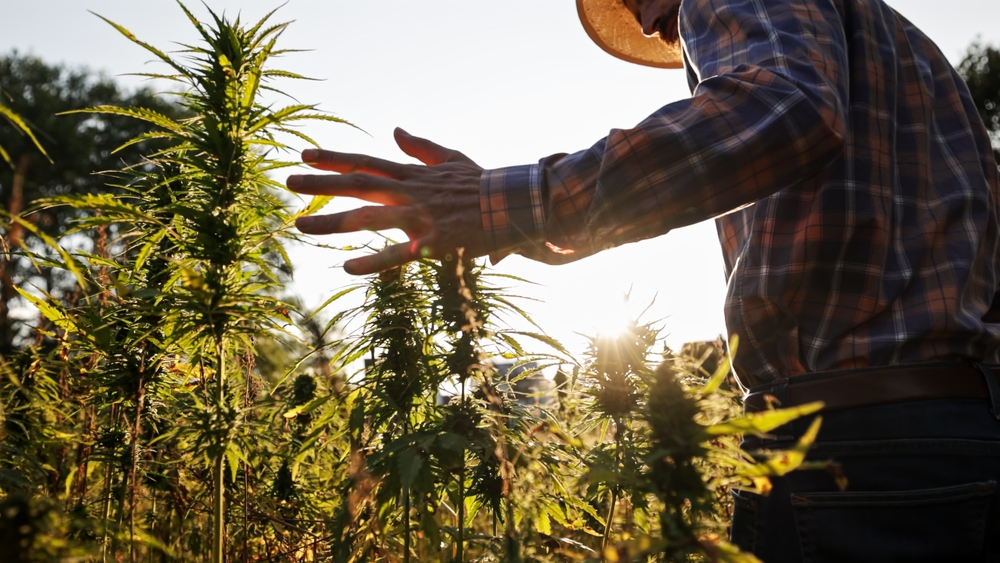For decades, cannabis was treated as an illegal, dangerous drug in the US, because it naturally contains the psychoactive cannabinoid THC. But the cannabis landscape changed in 2018, when a single phrase in the 2018 Farm Bill aimed at helping struggling hemp farmers created a loophole that launched an entirely new industry.
Cannabis and hemp are both varieties of the cannabis sativa plant. That means they both contain delta-9 tetrahydrocannabinol, better known as THC, the natural cannabinoid responsible for that famous, relaxing “high.” THC is the most abundant cannabinoid in the variety that’s usually referred to as simply “cannabis.”
Hemp has THC too, but in considerably lower quantities. In 1976, Ernest Small, a Canadian botanist, used that difference in THC content as a basis for separating variants of the cannabis sativa plant into two types—cannabis and hemp. For purposes of botanical classification, Small set the dividing line between cannabis and hemp at 0.3 percent THC content.
The 2018 Farm Bill Phrase That Launched an Industry
Small’s standard was largely arbitrary and intended only for botanical research. But the US government adopted it as the legal standard for hemp in its 2018 Farm Bill.
US Farm Bills are sprawling pieces of legislation aimed at regulating many aspects of agriculture, including farming and food production. The Farm Bill of 2018 introduced a provision to allow small hemp farmers to cultivate their crops not only for industrial uses, but also for commercial purposes.
The 2018 Farm Bill stipulates that farmers can legally cultivate “the plant Cannabis sativa L. and any part of that plant . . .whether growing or not, with a delta-9 tetrahydrocannabinol concentration of not more than 0.3 percent on a dry weight basis.” The Bill not only establishes Small’s standard as a legal definition of hemp, but it also specifies that hemp’s THC content derives specifically from the dry weight of the hemp plant itself.
That language removed hemp from the Controlled Substances Act and created more opportunities for farmers. But it also led to some unintended outcomes:
- The Bill specifically mentions only delta-9 THC.
- The phrase “dry weight” refers only to the hemp plant itself, not products derived from it.
- THC can also be derived from cannabidiol, or CBD, a legal, non-psychoactive cannabinoid.
Once manufacturers realized the implications of this wording, a new industry was born—one that used this new legal definition of hemp to develop an array of products that could contain much higher concentrations of THC than those allowed under the tight regulations governing products made from cannabis.
Delta-8 THC Leads the Way
Delta-9 THC is only one form of this psychoactive cannabinoid. Cannabis also contains delta-8 and delta-10, each distinguished by a single feature on the THC molecule. These forms of THC occur in much smaller quantities than delta-9, and they produce a milder psychoactive effect. But delta-8 THC also plays a major role in the growth of the legal hemp industry.
In 2022, a court case heard by the US Ninth District Court established that products containing delta-8 THC were legal under the provisions of the 2018 Farm Bill, since delta-8 THC occurs naturally in hemp. That decision opened the way for a flood of hemp-derived products containing delta-8 THC, leading the Cannabis Business Times to call 2022 the “year of delta-8.”
Because delta-8 THC isn’t plentiful in hemp, getting enough of it to fuel the demand for legal THC requires some complex chemical processing of another plentiful cannabinoid—CBD. Praised for its many potential health benefits and lack of psychoactive effects, CBD had been a darling of cannabis-based products for several years. But with increasing competition and a glut of CBD-infused products hitting the market, CBD producers found they could turn to a new source of revenue—products infused with delta-8 THC derived from their stock of CBD. Delta-8 products flooded the market, available everywhere with few if any restrictions.
Delta-9 THC Takes the Spotlight
But if 2022 was the year of delta-8, 2023 became the year of delta-9. Manufacturers used the language of the 2018 Farm Bill and the outcome of the 2022 court case to argue that this legal standard also applied to the most famous THC of all—delta-9. Using the dry weight metric for harvested hemp meant that products such as beverages and gummies could contain far higher concentrations of THC than equivalent products made with cannabis.
In 2023, more than a hundred companies in the US alone were offering hemp-derived products made with delta-9, alongside existing products containing delta-8. To the consternation of cannabis producers faced with tighter regulations and limited opportunities for growth, hemp-derived THC products are taking a bite out of their bottom line by making it easier for both medical and recreational consumers to buy high-THC products in any quantity they want.
But the regulations around cannabis also include testing for safety and quality. The hemp market isn’t subject to the same requirements, so products can contain a variety of harmful chemicals and widely varying amounts of THC. Because of their ambiguous, mostly legal status, federal and state regulators are working to find ways to impose at least minimal control over these products, but with limited success.
The market for hemp-derived products containing THC jumped from just over $200 million in 2020 to $2.8 billion in 2023—an increase of 1,283 percent in only three years. A new Farm Bill could change all that, but for now, the 2018 wording that birthed an industry still stands—and that industry shows no signs of slowing down.



